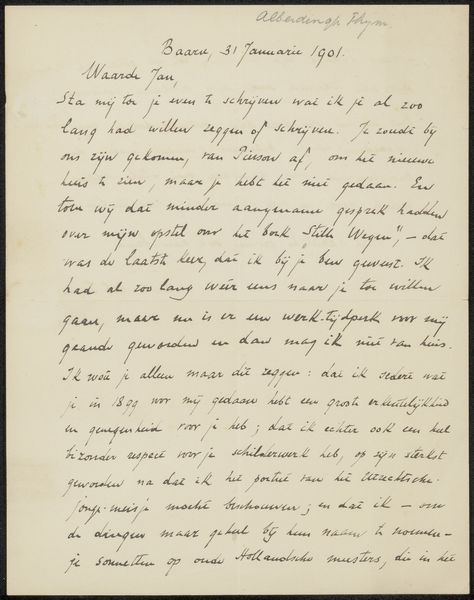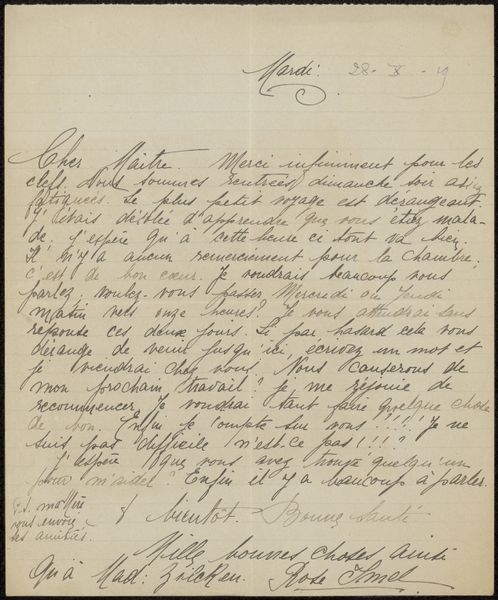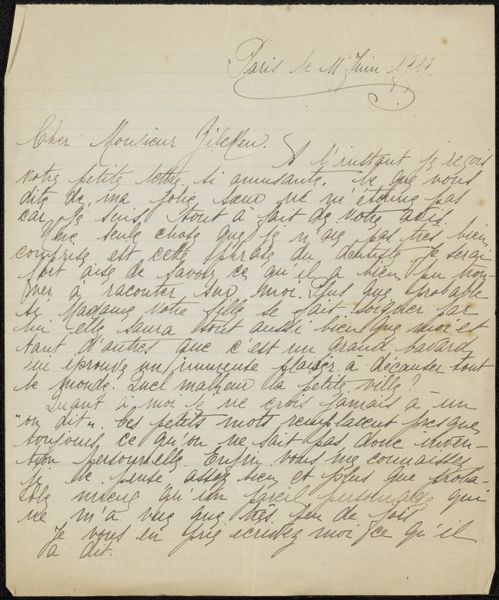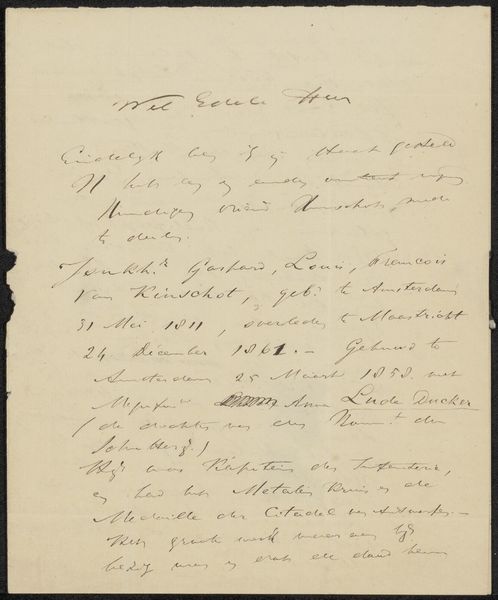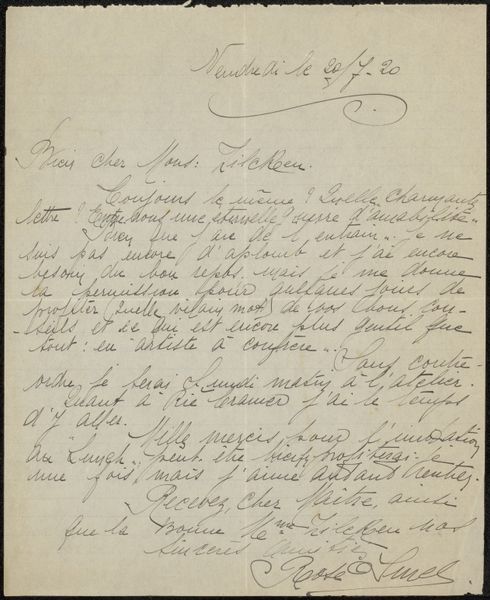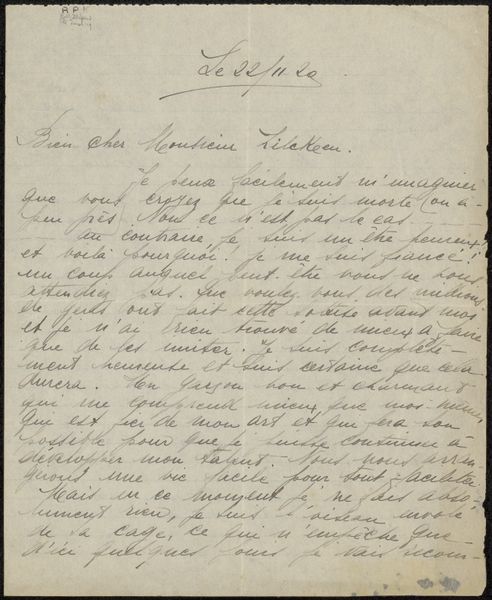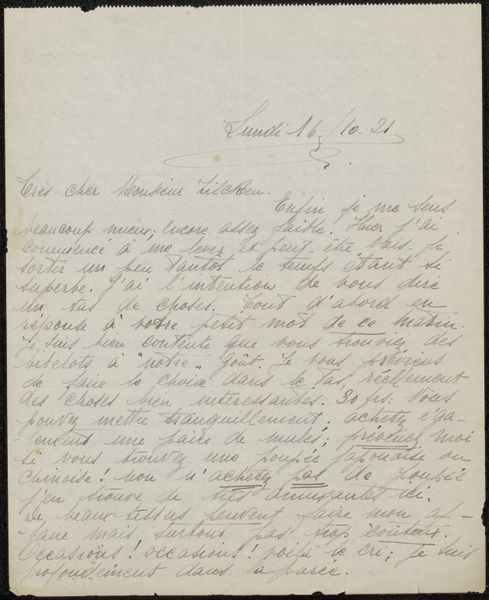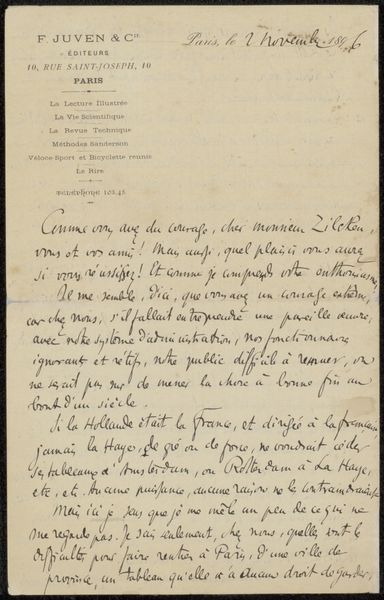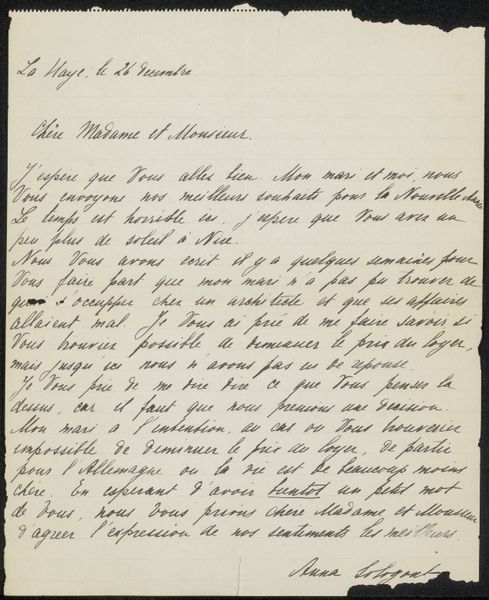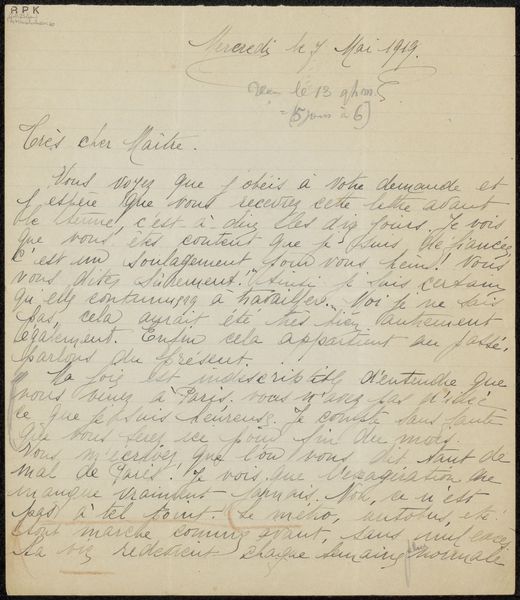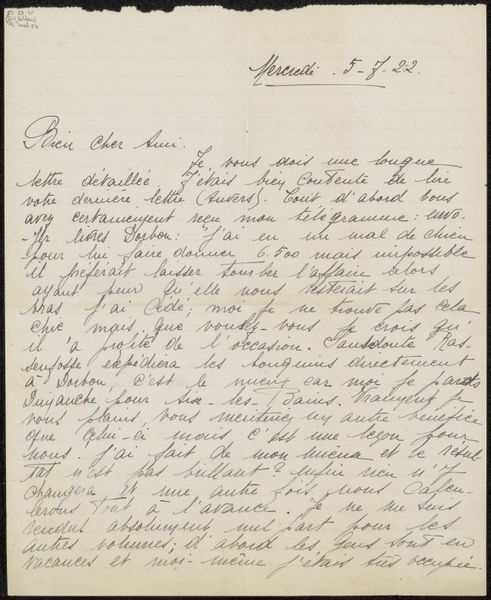
drawing, paper, ink, pen
#
drawing
#
paper
#
ink
#
pen
#
calligraphy
Copyright: Rijks Museum: Open Domain
Curator: We're looking at "Brieven aan Jan Veth" here, letters to Jan Veth, penned by Karel Johan Lodewijk Alberdingk Thijm, likely sometime between 1912 and 1921. It’s ink on paper, simple in its materiality, but quite evocative. Editor: The ink bleeds a little on the paper, doesn't it? Giving it an immediacy. And there’s so much history captured on a single page—a correspondence of importance. I wonder what those personal exchanges can tell us about their professional and intellectual circles at that time. Curator: Exactly! The choice of pen, the particular batch of ink available—these factors influenced the formation of the very words before us, now preserved, as artifacts documenting both their relationship and its moment in time. Think of the labor involved in the very act of creating and delivering such correspondence. Editor: Indeed, the act of writing itself becomes a site of resistance or complicity depending on its circulation and accessibility to various audiences. What power dynamics do these letters represent between the author and the recipient, especially within the context of their societal positions and the artistic movements they may have been a part of? Who did this archive reach, and who was excluded from its influence? Curator: These letters probably circulated within specific communities and could reflect contemporary opinions. As material objects, these texts tell stories about paper production, ink composition, and the very physical nature of inscription that influences interpretation, then and now. Editor: What are the possibilities for reinterpreting their dialogues through queer, intersectional, or postcolonial perspectives? Letters like these can act as mirrors reflecting back the socio-political ideologies that shape identities and relationships. Curator: Certainly! And examining the production quality, the type of paper, even the ink’s fading over time, contributes to understanding these works. It reveals clues about Alberdingk Thijm's resources, labor, and even cultural context in its purest form. Editor: By decentering individual authorship and shifting focus toward historical dialogues and epistolary networks, aren't we offered broader insights into the construction of the cultural and political fabric during that period? Curator: Precisely. By investigating these material components, the tools of art-making become crucial narratives and enable understanding broader societal and cultural currents that influence creators of that era. Editor: Thank you for helping uncover and contextualize this slice of history. I'll never look at archival materials the same way. Curator: A pleasure! Hopefully this has offered insight to explore how even basic components inform the bigger picture.
Comments
No comments
Be the first to comment and join the conversation on the ultimate creative platform.
